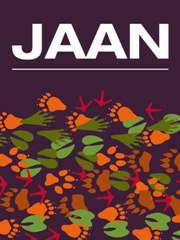Article contents
The concentration of strontium and other minerals in animal feed ingredients
Published online by Cambridge University Press: 04 February 2014
Summary
Variance in macro- and micro-mineral concentration in feed ingredients for farmed livestock contributes to sub-optimal performance and may compromise health and welfare. Although routine quality assurance and quality control procedures in feed mills or integrated poultry or swine businesses may track variance in the concentration of minerals of immediate nutritional importance, such as phosphorus (P), calcium (Ca) and sodium (Na), micro-minerals such as strontium (Sr) attract less attention. In order to create a framework for further study, the mineral concentration in more than 130 animal feed ingredients commonly used in Australia were analysed by inductively coupled plasma optical emission spectroscopy (ICP-OES). Due to a dearth of information, the principal focus of the survey was Sr, but the concentration of Ca, P, magnesium (Mg), manganese (Mn), potassium (K), iron (Fe), copper (Cu), zinc (Zn), sulphur (S) and Na were analysed concurrently. Generally the minerals present at the highest concentrations in the various feed ingredients examined were Ca, P and Mg. As anticipated, the ingredients with the highest concentrations of Ca and P were inorganic phosphates, limestone and meat and bone meal. The average Ca concentration in limestone was 393 g/kg but a range of 376–415 g/kg was observed which may be nutritionally important. Furthermore, the Mg concentration in limestone ranged from 7–535 mg/kg suggesting some contamination by dolomite lime sources. A total of 24 meat and bone meal samples were included in the analysis and mean Ca and P concentrations were 109 and 54 g/kg respectively. However, the range of Ca and P in meat and bone meal was considerable with Ca concentrations from 51–148 g/kg and P concentrations from 26–66 g/kg. A total of 81 cereal, grain legume and cereal by-product samples were included as part of the survey and these vegetable feed ingredients contained relatively low concentrations of most minerals with Ca, P, Mg and K dominating. The K concentration of soybean meal was found to be around 23 g/kg and ranged from approximately 22–27 g/kg. In comparison, the Sr concentration in the feed ingredients was low relative to other minerals, with limestone having the highest level of strontium at 329 mg/kg. Overall those feed ingredients from a mineral origin had the highest level of Sr. In addition, meat and bone meal had a relatively high concentration of Sr (around 159 mg/kg).
- Type
- Original Research
- Information
- Copyright
- Copyright © Cambridge University Press and Journal of Applied Animal Nutrition Ltd. 2014
References
- 12
- Cited by


